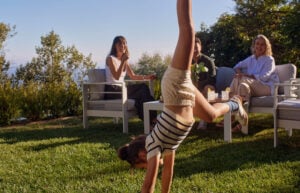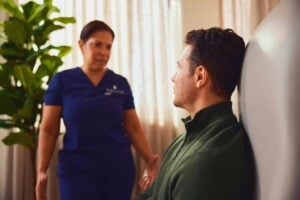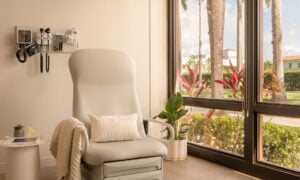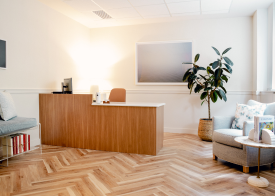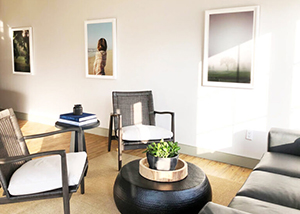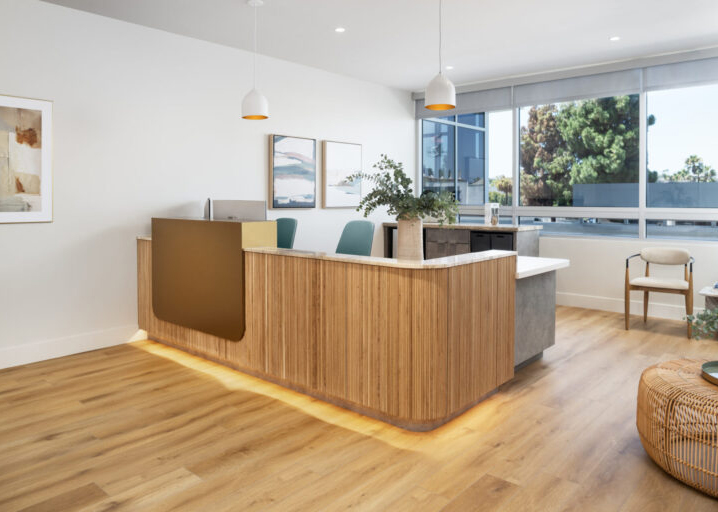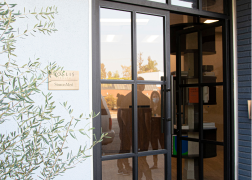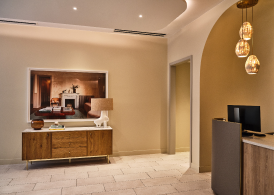When and how did you learn you had scoliosis?
I first learned I had scoliosis in the fourth grade during a school screening. The nurse ran her finger up and down my spine multiple times and I knew something wasn’t right. She immediately walked me to the front office and had them call my mom to come into the school as if something was wrong and I remember feeling like I was in trouble. When my mom arrived, they explained that they detected a slight curvature in my spine and suggested I see a doctor for treatment. She took me to our pediatrician, who assured us that 10 percent of women in the United States have scoliosis and I’d probably grow out of it. Ironically, my mother’s family are huge in the chiropractic community—they own a publication called “The American Chiropractor,” and two of my uncles as well as my grandfather were practicing chiropractic. We consulted with them and they confirmed that as long as the curve did not increase we shouldn’t be worried. With that in mind, I went on practicing gymnastics and cheerleading and didn’t give it another thought till I was 16. It was then that we discovered my curve had developed immensely.
How did scoliosis affect your teenage years? How did you imagine your future?
It’s affected me significantly, and has truly molded me into the type of person I am today. Many people don’t understand what telling a young girl they have a “spinal abnormality” will do to them, and I feel like we need to be very cautious with how we communicate this messaging to young minds.
When I was 16 my scoliosis curve escalated to 60 degrees, and it felt like it happened overnight. During my teenage years I grew up in the Republic of Panama with my family and was living in somewhat of a bubble, so I desperately wanted to talk to someone who understood what I was going through. Thanks to my mother’s family, I was blessed to be surrounded by a team of chiropractors who guided me to the best treatment facilities in the USA. I’d attend scoliosis rehabilitation for two-week periods at a time multiple times per year. Even though my mother would come with me, it was very depressing and took a lot of my physical and emotional energy.
When thinking of my future, I immediately pictured the humpback of Notre Dame. I thought that was going to be me when I was older, and I wanted to do everything I could to prevent that from happening.
Thankfully, after the first two weeks of very intense treatment, my curve had reduced to 40 degrees and I was able to return to Panama with a regimen of at-home exercises, a back brace, and a chair I strapped myself to for 30 minutes, twice a day—it essentially pulled my spine straighter, to help hold the change. Unfortunately, my curve crept back to 60 degrees and thus began my personal battle with going in and out of rehab to combat my very persistent scoliosis.
There was a point in time where I recall searching the internet for a success story, but all I could find were people walking me through their surgeries. I could not find a single person out there who was living a healthy, pain-free, and surgery-free life. Since surgery didn’t sit well with my personal preference I decided I’d find a way to become the success story that I was looking for.
“Many people don’t understand what telling a young girl they have a ‘spinal abnormality’ will do to them, and I feel like we need to be very cautious with how we communicate this messaging to young minds.”
What was your emotional journey from diagnosis to acceptance like?
It took years before I accepted it, and even longer before I started talking about it. When I was 17, I started modeling a lot and knew something like this could affect my modeling career, so I kept my diagnosis a secret until I was 23. Throughout those years, I remained focused on my exercises and attended new treatment centers. I worked on myself daily to the point where if you saw me off the street, you’d never know I had scoliosis because I was so diligent with maintaining a good posture and receiving consistent care. I learned to wear my hair long and hide my back, and as long as I did that I convinced myself that no one would know. It wasn’t till I was 19 in New York when a casting director vocalized he noticed something was “wrong” with me during a fitting and dismissed me from the call back. I tried to ignore it, but it affected my mental state immensely because at that point in time it was my dream to be a model and I felt like this diagnosis was ruining that.
I ended up moving to Miami to finish my degree and worked with a few agencies before signing with Caroline Gleason Management, which is where I ended up staying throughout my modeling career. Caroline was the first person in the modeling industry who I opened up to about my condition. It was thanks to her support and encouragement that I decided to share a photo (linked here) of my back during National Scoliosis Awareness month and start talking about the submit in hopes to be that positive success story that I was searching for many years prior.
I remember sitting in my car after the post went live and crying with relief as an influx of support began to come through. I was so excited to see such an incredible amount of women, young girls, and even moms who had recently-diagnosed daughters reaching out and thanking me for being open about it. It was at that moment that I knew I had found my community.
How did you decide to become an advocate?
The moment I posted that photo and started receiving personal messages from others sharing their stories, I knew I wanted to be an advocate for scoliosis. Even with the positive feedback, I still felt uncomfortable with being completely vulnerable on my main account, so I decided to separate my personal page from my wellness/scoliosis page and that’s how Organically Grounded was born.
Through that account I started opening up to my audience on my daily scoliosis and wellness journey, what worked, and how I kept my body moving and feeling good – which included yoga, pilates, and breathing exercises – all things I had learned from multiple doctors during my days in treatment. I also included health and nutrition tips – like how to deal with inflammation and so on, since at that time I was obtaining my nutritionist certificate.
How have you seen the perception of scoliosis change over the years?
Over the past few years, I certainly feel like it’s becoming a more talked about topic, thanks to social media and celebrities like Martha Hunt talking openly about it. I think we’re living in an age where people are encouraged to be vulnerable and share what they’re going through, which is very different from when I was a teenager. It’s a beautiful thing, and I hope we can continue doing so.
“It took years before I accepted it, and even longer before I started talking about it. Finally, on National Scoliosis Awareness month, I posted a photo of my back, and I remember sitting in my car, crying with relief when I saw the influx of support begin to come through. I knew I had found my community.”
What do you wish more people knew about scoliosis and what are some of the biggest obstacles people face?
I think the biggest obstacle (based on personal experience) is self-love and acceptance. It’s really hard to accept you have something that (up to this point in time) cannot be cured or explained and be okay with that. It can mess with your mind and how you view yourself. I think receiving proper treatment is another big one. There are so many alternative treatments than surgery and it’s extremely frustrating to me that insurance companies do not provide preventative care for scoliosis patients, but will cover an invasive surgery. As a patient you should feel you have the option to choose which method of treatment is right for you. Preventative treatment is a huge out-of-pocket cost, and shouldn’t be something that a person needs to stress about when they’re already suffering from a life-long condition.
What surprised you most of your journey with scoliosis?
The biggest surprise I felt through my journey with scoliosis was that one day my mind just switched and I turned from hating my scoliosis to finding love and acceptance for it, which is something my younger self would have never imagined. I slowly became grateful for the condition I was dealt, because I knew it had happened to me because I could handle it. It also pushed me to become more involved in the health and wellness community, which has become one of my biggest passions.
If there has been a silver lining with having to deal with a chronic illness what would you say it is?
The silver lining I’ve discovered through living with a chronic illness is that it’s taught me to focus on the positives in life. It’s made me extremely grateful for my body, and has given me a new perspective on the struggles people are going through internally. You never know what struggles people are going through, no matter how they present themselves. It’s important to always be kind and never make assumptions.
What are you most looking forward to about joining Sollis?
My favorite thing about Sollis Health is the 24/7 telehealth access. And if I do need to go in to see a doctor, the medical center is comforting and warm.
Words to live by?
You are what you believe.
